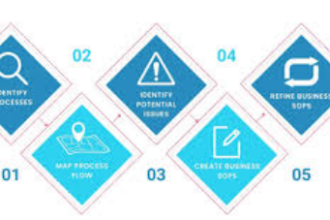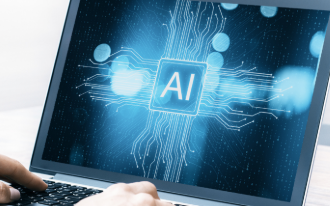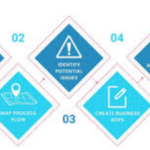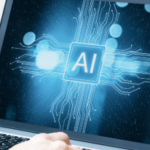In this article, I will discuss what robot vacuum technology is. Robot Vacuum Technology is a modern technological innovation that incorporates smart sensors, brushes, and suction systems to clean floors autonomously.
These devices can traverse spaces, circumvent barriers, and even communicate with mobile applications or smart home devices, streamlining and economizing the time spent on manual home cleaning.
What Is Robot Vacuum Technology?
Robot vacuum technology focuses on the systems used in automatic floor cleaning devices, which operate autonomously and require no manual intervention.

Such smart vacuum cleaners employ a combination of sensors, brushes, and suction and navigation systems, which enable them to detect, organize, and clean surfaces that include carpets, tiles, and hardwood, among others.
Many products of this kind are compatible with applications or smart devices and can thus be programmed, scheduled, and remotely operated. It saves time and manual work and improves floor hygiene in contemporary residences.
How Robot Vacuums Work
Navigation & Mapping: Uses LIDAR, cameras, or other sensors to plot the layout of the rooms and develop an effective route for cleaning.
Obstacle Detection: Sensors differentiate the walls, tables, and other elements to identify and avoid collisions with them.
Suction & Brushes: The rotating brushes guide dirt and other materials towards the suction inlet, whereby the dust, debris, and pet hair are collected.
Scheduling & Automation: Users are able to control the cleaning schedules through apps or other smart home devices.
Self-Charging: When the battery is low, the device autonomously goes back to the docking station to recharge.
Multi-Surface Cleaning: The robot automatically varies the suction and brush speed for carpets, hardwood, or tiles.
Advantages of Robot Vacuum Technology
Time-Saving: Frees users to spend time elsewhere as the floors are cleaned automatically.
Convenience: Cleans without any human help as part of self-operated schedules.
Effective Cleaning: With use of sensors and intelligent navigation, all rooms are cleaned thoroughly.
Cross Platform: Services carpets, hardwood, tiles and floors of other types.
Less Allergens: With pet hair and other dust removed, the air is cleaner.
Smart Device: Does not require remotes, can also be integrated through phone apps and voice assisting technology.
Low Effort Maintenance: Further supervision is not required unlike other manual vacuuming methods.
Tips For Safe Robot Vacuum Technology
Clear the floor: Remove cables, small objects, and other delicate items to prevent damage, and to avoid getting stuck.
Keep pets safe: Make sure pets are relaxed, and avoid areas where they can obstruct the vacuum.
Check sensors and brushes: Regularly clean sensors and brushes to maintain functionality.
Charging station: Place the dock on a flat surface, away from water and other obstacles.
Avoid damp surfaces: Most robot vacuum cleaners are not designed to clean damp surfaces unless stated.
Initial run monitoring: Monitor the first few runs to make sure the vacuum can get around the space and not get stuck.
Manufacturer specifications: Read the rest of the manual for weight limits, surfaces, compatible items, and maintenance.
Key Features of Robot Vacuum Technology
Smart Navigation & Mapping
Employs LIDAR, cameras, and sensors to devise room layouts and optimize routing for cleaning.
Obstacle Detection & Avoidance
Identifies walls, furniture, and other objects to avoid collisions and falls.
Self-Charging & Docking
Interfaces with the charging station autonomously when the battery is critically low.
Multi-Surface Cleaning
Modifies suction and brushes for varying surfaces, including carpet, tile, hardwood, and area rugs.
App & Remote Control
Set schedules, track cleaning status, and manipulate the cleaner from a distance through smartphone applications.
Automatic Dirt Disposal
Certain models self-empty their dustbins into a base station for optimal low maintenance and effortless upkeep.
Voice Assistant Integration
Works with Alexa, Google Assistant, and other smart home capabilities.
Limitations of Robot Vacuum Technology

High Cost: The price of top-tier devices with advanced technology can be pricey.
Limited Cleaning in Cluttered Spaces: It has difficulties with tight corners, heavily cluttered areas, or cables.
Maintenance Needs: Regular cleaning and replenishment of dustbins, filters, and brushes are required.
Battery Life: One charge may not be sufficient for extensive homes.
Navigation Errors: Fails to clean specific areas and can get stuck on barriers.
Noise Levels: Can be excessively loud on high settings for some users.
Cannot Replace Deep Cleaning: The depth of cleaning for traditional vacuuming on carpets may not be matched.
Future of Robot Vacuum Technology
Advances in technology promise to make the next generation of robot vacuums smarter and more efficient while offering greater integration with smart homes. Improved AI and machine learning will allow future machine vacuums to recognize obstacles better, develop more efficient and effective cleaning routes, and adjust to changes in the home’s layout.
Improved battery life and lower operational noise, as well as better cleaning of multiple surfaces, will likely also be hallmarks of future models.
Integrated with home automation systems, a combined, coordinated cleaning approach with multiple smart devices will be automated in these future models. In summary, robot vacuum cleaners continue to evolve, inching closer to highly efficient and fully autonomous home cleaning solutions.
Pros & Cons
| Pros | Cons |
|---|---|
| Saves time with automated cleaning | High cost for advanced models |
| Convenient scheduling and remote control | Struggles in cluttered or tight spaces |
| Efficient and consistent cleaning | Requires regular maintenance (brushes, filters, dustbin) |
| Works on multiple surfaces (carpets, tiles, hardwood) | Limited battery life in large homes |
| Reduces dust, allergens, and pet hair | May not replace deep cleaning entirely |
| Integrates with smart home systems | Navigation errors or getting stuck |
| Minimal human effort required | Can be noisy on high suction settings |
Conclusion
To conclude, the evolution of the cleaning of homes using technology, in the form of the robotic vacuum, has successfully combined robotic cleaning, smart navigation, and the ability to clean multiple surfaces.
Although the technology comes at a cost and has maintenance requirements, and occasionally gets stuck, the time, convenience, and improved sanitation of the home are worth the modern addition. Continued innovation in this space will make the future robot appliances even ‘smarter’ and better synchronized with the home systems. Automated cleaning will become a core part of daily chores.
FAQ
Can robot vacuums clean all floor types?
Most models work on carpets, hardwood, tiles, and rugs, adjusting suction and brushes as needed.
Do robot vacuums require maintenance?
Yes, brushes, filters, and dustbins need regular cleaning and occasional replacement for optimal performance.
Can a robot vacuum replace a traditional vacuum?
While convenient, robot vacuums may not fully replace deep cleaning; they are best for regular maintenance.













